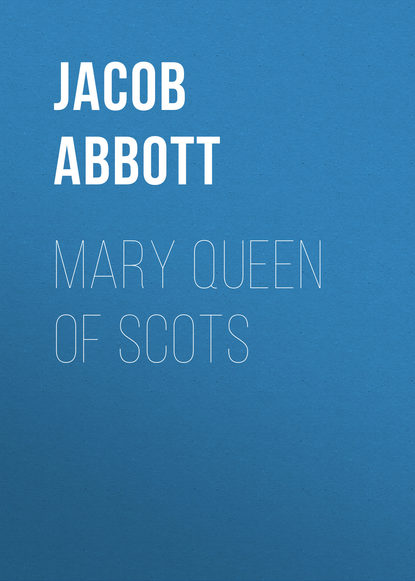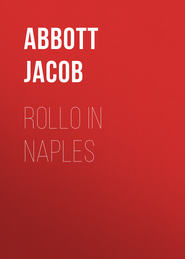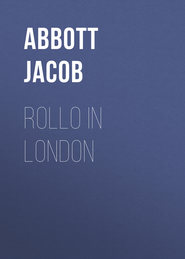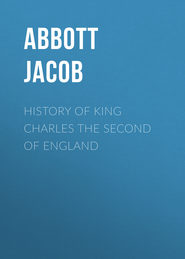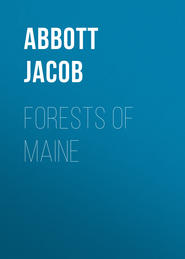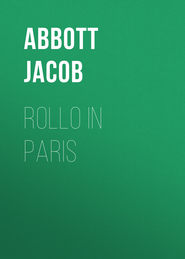По всем вопросам обращайтесь на: info@litportal.ru
(©) 2003-2024.
✖
Mary Queen of Scots
Настройки чтения
Размер шрифта
Высота строк
Поля
The words Notre Dame mean Our Lady, an expression by which the Roman Catholics denote Mary, the mother of Jesus. The church of Notre Dame had been for many centuries the vast cathedral church of Paris, where all great ceremonies of state were performed. On this occasion they erected a great amphitheater in the area before the church, which would accommodate many thousands of the spectators who were to assemble, and enable them to see the procession. The bride and bridegroom, and their friends, were to assemble in the bishop's palace, which was near the Cathedral, and a covered gallery was erected, leading from this palace to the church, through which the bridal party were to enter. They lined this gallery throughout with purple velvet, and ornamented it in other ways, so as to make the approach to the church through it inconceivably splendid.
The procession.
Mary's dress.
Crowds began to collect in the great amphitheater early in the morning. The streets leading to Notre Dame were thronged. Every window in all the lofty buildings around, and every balcony, was full. From ten to twelve the military bands began to arrive, and the long procession was formed, the different parties being dressed in various picturesque costumes. The embassadors of various foreign potentates were present, each bearing their appropriate insignia. The legate of the pope, magnificently dressed, had an attendant bearing before him a cross of massive gold. The bridegroom, Francis the dauphin, followed this legate, and soon afterward came Mary, accompanied by the king. She was dressed in white. Her robe was embroidered with the figure of the lily, and it glittered with diamonds and ornaments of silver. As was the custom in those days, her dress formed a long train, which was borne by two young girls who walked behind her. She wore a diamond necklace, with a ring of immense value suspended from it, and upon her head was a golden coronet, enriched with diamonds and gems of inestimable value.
Appearance of Mary.
But the dress and the diamonds which Mary wore were not the chief points of attraction to the spectators. All who were present on the occasion agree in saying that she looked inexpressibly beautiful, and that there was an indescribable grace and charm in all her movements and manner, which filled all who saw her with an intoxication of delight. She was artless and unaffected in her manners, and her countenance, the expression of which was generally placid and calm, was lighted up with the animation and interest of the occasion, so as to make every body envy the dauphin the possession of so beautiful a bride. Queen Catharine, and a long train of the ladies of the court, followed in the procession after Mary. Every body thought that she felt envious and ill at ease.
Wedding ring.
Movement of the procession.
The essential thing in the marriage ceremony was to be the putting of the wedding ring upon Mary's finger, and the pronouncing of the nuptial benediction which was immediately to follow it. This ceremony was to be performed by the Archbishop of Rouen, who was at that time the greatest ecclesiastical dignitary in France. In order that as many persons as possible might witness this, it was arranged that it should be performed at the great door of the church, so as to be in view of the immense throng which had assembled in the amphitheater erected in the area, and of the multitudes which had taken their positions at the windows and balconies, and on the house-tops around. The procession, accordingly, having entered the church through the covered gallery, moved along the aisles and came to the great door. Here a royal pavilion had been erected, where the bridal party could stand in view of the whole assembled multitude. King Henry had the ring. He gave it to the archbishop. The archbishop placed it upon Mary's finger, and pronounced the benediction in a loud voice. The usual congratulations followed, and Mary greeted her husband under the name of his majesty the King of Scotland. Then the whole mighty crowd rent the air with shouts and acclamations.
Largess.
Confusion.
It was the custom in those days, on such great public occasions as this, to scatter money among the crowd, that they might scramble for it. This was called the king's largess; and the largess was pompously proclaimed by heralds before the money was thrown. The throwing of the money among this immense throng produced a scene of indescribable confusion. The people precipitated themselves upon each other in their eagerness to seize the silver and the gold. Some were trampled under foot. Some were stripped of their hats and cloaks, or had their clothes torn from them. Some fainted, and were borne out of the scene with infinite difficulty and danger. At last the people clamorously begged the officers to desist from throwing any more money, for fear that the most serious and fatal consequences might ensue.
The choir.
Mass.
In the mean time, the bridal procession returned into the church, and, advancing up the center between the lofty columns, they came to a place called the choir, which is in the heart of the church, and is inclosed by screens of carved and sculptured work. It is in the choir that congregations assemble to be present at mass and other religious ceremonies. Movable seats are placed here on ordinary occasions, but at the time of this wedding the place was fitted up with great splendor. Here mass was performed in the presence of the bridal party. Mass is a solemn ceremony conducted by the priests, in which they renew, or think they renew, the sacrifice of Christ, accompanied with offerings of incense, and other acts of adoration, and the chanting of solemn hymns of praise.
Return of the procession.
Collation.
Ball.
At the close of these services the procession moved again down the church, and, issuing forth at the great entrance, it passed around upon a spacious platform, where it could be seen to advantage by all the spectators. Mary was the center to which all eyes were turned. She moved along, the very picture of grace and beauty, the two young girls who followed her bearing her train. The procession, after completing its circuit, returned to the church, and thence, through the covered gallery, it moved back to the bishop's palace. Here the company partook of a grand collation. After the collation there was a ball, but the ladies were too much embarrassed with their magnificent dresses to be able to dance, and at five o'clock the royal family returned to their home. Mary and Queen Catharine went together in a sort of palanquin, borne by men, high officers of state walking on each side. The king and the dauphin followed on horseback, with a large company in their train; but the streets were every where so crowded with eager spectators that it was with extreme difficulty that they were able to make their way.
Evening's entertainments.
The palace to which the party went to spend the evening was fitted up and illuminated in the most splendid manner, and a variety of most curious entertainments had been contrived for the amusement of the company. There were twelve artificial horses, made to move by internal mechanism, and splendidly caparisoned. The children of the company, the little princes and dukes, mounted these horses and rode around the arena. Then came in a company of men dressed like pilgrims, each of whom recited a poem written in honor of the occasion. After this was an exhibition of galleys, or boats, upon a little sea. These boats were large enough to bear up two persons. There were two seats in each, one of which was occupied by a young gentleman. As the boats advanced, one by one, each gentleman leaped to the shore, or to what represented the shore, and, going among the company, selected a lady and bore her off to his boat, and then, seating her in the vacant chair, took his place by her side, and continued his voyage. Francis was in one of the boats, and he, on coming to the shore, took Mary for his companion.
A tournament.
Rank of the combatants.
The celebrations and festivities of this famous wedding continued for fifteen days. They closed with a grand tournament. A tournament was a very magnificent spectacle in those days. A field was inclosed, in which kings, and princes, and knights, fully armed, and mounted on war-horses, tilted against each other with lances and blunted swords. Ladies of high rank were present as spectators and judges, and one was appointed at each tournament to preside, and to distribute the honors and rewards to those who were most successful in the contests. The greatest possible degree of deference and honor was paid to the ladies by all the knights on these occasions. Once, at a tournament in London, arranged by a king of England, the knights and noblemen rode in a long procession to the field, each led by a lady by means of a silver chain. It was a great honor to be admitted to a share in these contests, as none but persons of the highest rank were allowed to take a part in them. Whenever one was to be held, invitations were sent to all the courts of Europe, and kings, queens, and sovereign princes came to witness the spectacle.
Lances.
Rapid evolutions.
Tourner.
The horsemen who contended on these occasions carried long lances, blunt, indeed, at the end, so that they could not penetrate the armor of the antagonist at which they were aimed, but yet of such weight that the momentum of the blow was sometimes sufficient to unhorse him. The great object of every combatant was, accordingly, to protect himself from this danger. He must turn his horse suddenly, and avoid the lance of his antagonist; or he must strike it with his own, and thus parry the blow; or if he must encounter it, he was to brace himself firmly in his saddle, and resist its impulse with all the strength that he could command. It required, therefore, great strength and great dexterity to excel in a tournament. In fact, the rapidity of the evolutions which it required gave origin to the name, the word tournament being formed from a French word[3 - Tourner.] which signifies to turn.
Francis's feebleness.
The princes and noblemen who were present at the wedding all joined in the tournament except the poor bridegroom, who was too weak and feeble in body, and too timid in mind, for any such rough and warlike exercises. Francis was very plain and unprepossessing in countenance, and shy and awkward in his manners. His health had always been very infirm, and though his rank was very high, as he was the heir apparent to what was then the greatest throne in Europe, every body thought that in all other respects he was unfit to be the husband of such a beautiful and accomplished princess as Mary. He was timid, shy, and anxious and unhappy in disposition. He knew that the gay and warlike spirits around him could not look upon him with respect, and he felt a painful sense of his inferiority.
Mary's love for him.
Mary, however, loved him. It was a love, perhaps, mingled with pity. She did not assume an air of superiority over him, but endeavored to encourage him, to lead him forward, to inspire him with confidence and hope, and to make him feel his own strength and value. She was herself of a sedate and thoughtful character, and with all her intellectual superiority, she was characterized by that feminine gentleness of spirit, that disposition to follow and to yield rather than to govern, that desire to be led and to be loved rather than to lead and be admired, which constitute the highest charm of woman.
He retires to the country.
Francis was glad when the celebrations, tournament and all, were well over. He set off from Paris with his young bride to one of his country residences, where he could live, for a while, in peace and quietness. Mary was released, in some degree, from the restraints, and formalities, and rules of etiquette of King Henry's court, and was, to some extent, her own mistress, though still surrounded with many attendants, and much parade and splendor. The young couple thus commenced the short period of their married life. They were certainly a very young couple, being both of them under sixteen.
Rejoicings in Scotland.
Mons Meg.
Large ball.
Celebration of Mary's marriage.
The rejoicings on account of the marriage were not confined to Paris. All Scotland celebrated the event with much parade. The Catholic party there were pleased with the final consummation of the event, and all the people, in fact, joined, more or less, in commemorating the marriage of their queen. There is in the Castle of Edinburgh, on a lofty platform which overlooks a broad valley, a monstrous gun, several centuries old, which was formed of bars of iron secured by great iron hoops. The balls which this gun carried are more than a foot in diameter. The name of this enormous piece of ordnance is Mons Meg. It is now disabled, having been burst, many years ago, and injured beyond the possibility of repair. There were great rejoicings in Edinburgh at the time of Mary's marriage, and from some old accounts which still remain at the castle, it appears that ten shillings were paid to some men for moving up Mons Meg to the embrasure of the battery, and for finding and bringing back her shot after she was discharged; by which it appears that firing Mons Meg was a part of the celebration by which the people of Edinburgh honored the marriage of their queen.





